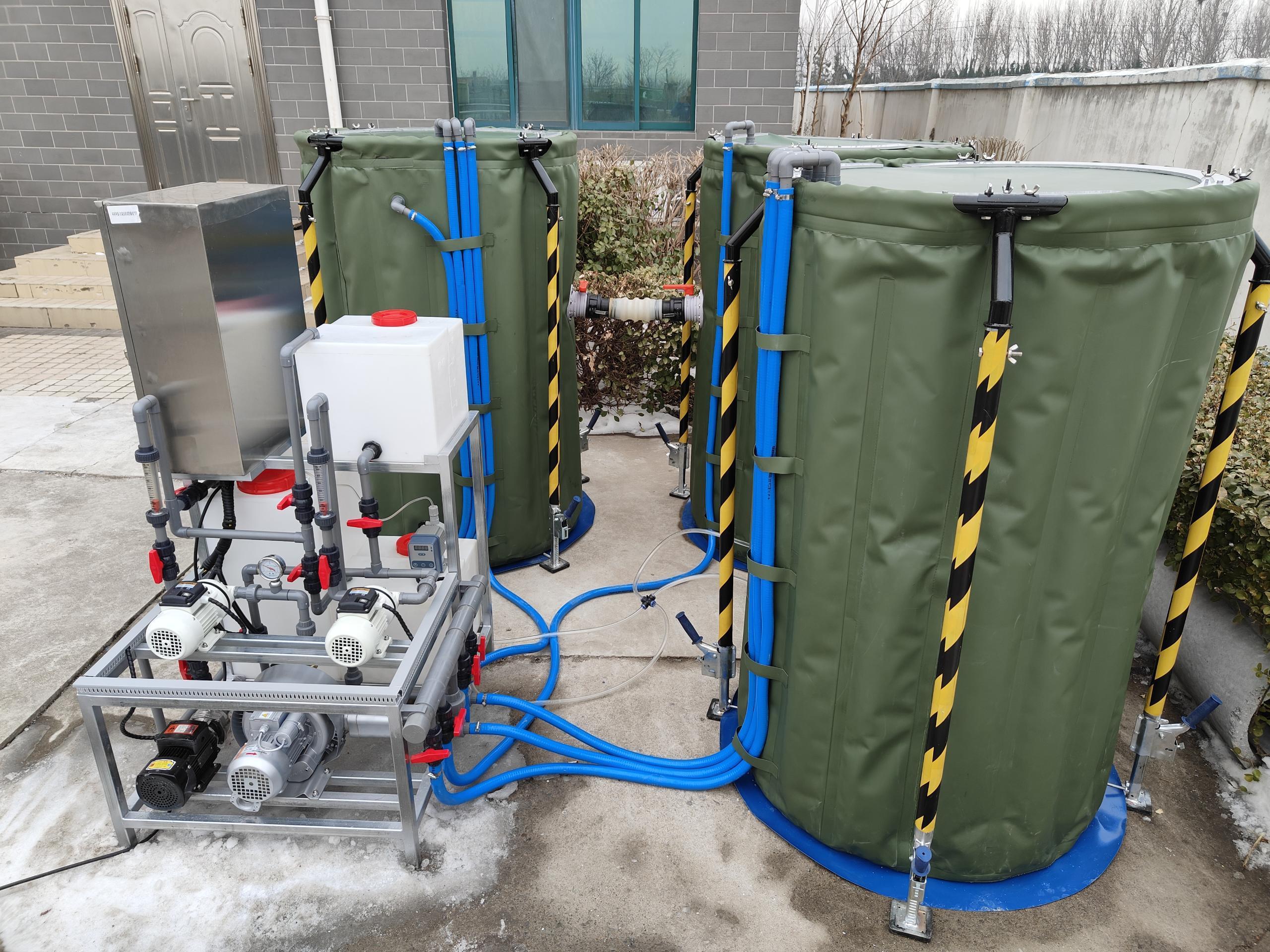20
2025
-
06
Decentralized Water Treatment and Resource Utilization: Breaking through Spatial and Cost Constraints
Author:
In decentralized water use scenarios such as rural communities, small towns, and remote industrial parks, traditional centralized water supply systems struggle to meet flexible water demand due to high pipeline construction costs and complex operation and maintenance.
Empowerment of Flexible Tanks:
- Modular Design: Supports on-demand combination of tank bodies with different volumes (e.g., 100 m³-5000 m³), adapting to the needs of communities, schools, factories, and other scales.
- Decentralized Treatment: Integrates processes such as biofilm and MBR to treat domestic sewage or rainwater on-site. The effluent meets standards for irrigation, toilet flushing, or landscape water supplementation, reducing reliance on centralized water supply.
- Cost Optimization: Compared with traditional pipeline construction, it saves 30%-50% of engineering investment and reduces operation and maintenance costs by more than 40%.
Emergency Water Security: Enhancing Social Risk Resistance
Under extreme events such as droughts, floods, and earthquakes, traditional water storage facilities are vulnerable and slow to respond, failing to meet emergency water needs.
- Rapid Deployment: Foldable tanks can be built within 72 hours, with single-tank volume flexibly configured (e.g., 1000 m³-100,000 m³) to adapt to temporary water supply needs in disaster areas.
- Mobile Flexibility: Transported to remote disaster areas by vehicles or helicopters to provide drinking water, irrigation water, or fire-fighting water.
- Water Quality Assurance: Equipped with multi-stage filtration and disinfection modules to ensure effluent meets domestic drinking water standards.
Water Resource Circular Utilization: Promoting "Reduction-Reuse-Resource Utilization"
Scenarios such as urban greening, road spraying, and industrial cooling have low water quality requirements, but traditional water use leads to serious waste.
- Reclaimed Water Reuse: Collects rainwater, domestic sewage, or industrial wastewater, and after treatment by flexible tanks, reuses it for non-drinking water scenarios to reduce high-quality water consumption.
- Cascading Utilization: Supplies water in grades according to demand (e.g., first-stage treated water for irrigation, second-stage treated water for toilet flushing), improving water resource utilization efficiency.
- Ecological Water Replenishment: Reclaimed water meeting standards is used for ecological replenishment of rivers and lakes to improve water environment quality.
Intelligent Water-saving Management: Achieving "Demand-based Water Supply-Precise Control"
Traditional water supply systems cause serious water waste due to the lack of real-time monitoring and dynamic regulation capabilities.
 Intelligent Sensing: Integrates liquid level, water quality, and flow sensors to monitor water storage and usage status in real time.
Intelligent Sensing: Integrates liquid level, water quality, and flow sensors to monitor water storage and usage status in real time.- AI Algorithms: Based on meteorological data and water demand prediction, automatically adjusts water storage capacity and supply pressure to avoid overflow or water outage.
- Water Rights Trading: Records water usage data through blockchain technology, supporting surplus water trading between enterprises or communities to enhance water resource allocation efficiency.
Policy Coordination and Model Innovation: Accelerating Technology Implementation and Promotion
- Policy Support: Governments reduce the application threshold of flexible tanks through measures such as financial subsidies, tax incentives, and water rights trading pilots.
- Business Models: Promotes models like "BOT + water rights trading" and "equipment leasing + operation and maintenance services" to attract social capital participation.
- Standard Formulation: Issues standards for flexible tank design, construction, and operation and maintenance to regulate technology application and ensure project quality and safety.
Related Products
Decentralized Water Treatment and Resource Utilization: Breaking through Spatial and Cost Constraints
2025-06-20
Application of Electrodialysis Technology in Separation of Glycine and Salts
2025-06-20
Exploration and Value of Fully Renewable Fiber Filters in Aquaculture Water Treatment
2025-06-18
Application Research of Electrodialysis Technology in Amino Acid Purification and Desalination
2025-06-16
Huanke Environmental Protection Technology
HOTLINE:
Address:Gongye 1st Street, Weicheng District, Weifang City, Shandong Province China
Contact:Zhang Gong
Phone:+86-18865361829
Email:sdhuanke@163.com


Consult
Copyright © 2023 Shandong Huanke Environmental Protection Technology Co., Ltd
